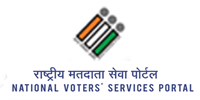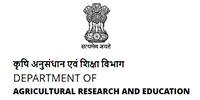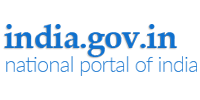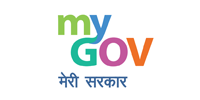FAQs on Women in Agriculture
A. Agriculture includes, all activities related to cultivation of crops, animal husbandary, poultry, livestock rearing, apiculture, gardening, fishing, aquaculture, sericulture, vermiculture, horticulture, floriculture, agro-forestry, or any other farming activity carried out through self-employment, tenurial cultivation, share cropping, or other types of cultivation including shifting cultivation, collection, use and sale of minor or non-timber forest produce by virtue of ownership rights or usufructuary rights.
A. The term "farmer" includes but not limited to, agricultural operational holders, landless cultivators, and agricultural labourers, planting labourers, pastoralists, sharecroppers and tenants. The term shall not include corporate entities operated by or involving farmers. In case of landless farmers migrating or moving from one state to another, if anyone stays in a state for at least six months, such person may be considered as a farmer in that particular state.
A. A woman living in a rural area, who is primarily involved in agricultural activity but does non-agricultural activity occasionally, is a woman farmer. Women engaged in agriculture in urban and semi-urban areas, and tribal women directly or indirectly involved in agriculture, shifting cultivation or collection (of agricultural produce), and the use and sale of minor or non-timber forest produce, are also considered women farmers. A woman can be considered a ‘woman farmer’ irrespective of marital status and land ownership.
A. A rural women involved in agriculture be issued a Woman Farmer Certificate by the gram panchayat after the approval of the gram sabha. In urban and peri-urban areas, an urban local body can issue the certificate, with the approval of an authority. A group of women can also get a ‘Group Women Farmers’ Certificate’. A Woman Farmer Certificate is proof of a woman’s status as a farmer. The certificate can be used as evidence in all administrative and judicial proceedings (Swaminathan, M.S. 2012. The Women Farmers' Entitlements Bill, 2011).
A. Apiculture, piggery, backyard pond fishery, duckery, backyard vegetable cultivation, marigold cultivation, vermicomposting, mushroom cultivation, backyard poultry, nursery raising, goatary, sericulture and value added agro-products are considered as women friendly farm enterprises
A. Aqua-tourism, fish drying units, preparation of value-added fish products, catering units, fish/prawn feed manufacture, fish/prawn seed collection, collection of bivalves (oyster, clam, etc.), coastal aquaculture (fish, prawn, bivalves culture), herbal medicine preparation, collection of seaweeds, tailoring, vegetable cultivation/marketing, collection of ornamental fishes, small-scale units, aquarium units/ornamental fish culture and backyard poultry are the potential livelihood options for women in the coastal ecosystem
A. The major gender issues in agriculture and allied sectors are gender division of labour, access to, ownership and control over of agri-production resources, intra-household decision-making, agriculture and allied institutions, mobility, health risks and occupational hazards, societal gender stereotypes, women’s invisibility, gender capacity and changes in gender relations.
A. Empowerment is an increased degree of autonomy and self-determination in people and in communities in order to enable them to represent their interests in a responsible and self-determined way, acting on their own authority.
A. Empowerment of women is a necessity for the very development of a society, since it enhances both the quality and the quantity of human resources available for development. Moreover, women in India are subject to varied forms of inequality that reduce the pace of their progress. Therefore, better understanding of women’s involvement in agriculture is also a pre-requisite for planning and promoting and gender responsive actions to achieve the twin objectives of women empowerment and sustainable agricultural growth.
A. It is technology to address practical or strategic needs of women farmers in all spheres of socio-economic and political aspects in order to increase their productivity and profitability by improving their access and control over agri-production resources.
A. Women empowerment schemes are a) Beti Bachao Beti Padhao Scheme; b) One Stop Centre Scheme Women Helpline Scheme; c) Ujjawala; d) Working Women Hostel; e) SWADHAR Greh; f) Support to Training and Employment Programme for Women (STEP); f) Nari Shakti Puraskar; g) Mahila E-Haat; h) Mahila Shakti Kendras (MSK); and i) NIRBHAYA.
A. It is a single window facilitator for provision of financial services with backward and forward linkages for women in the unorganized sector through Intermediary Micro Finance Organizations and Women Self Help Groups and to augment their capacities through multi-pronged efforts.
A. Mahila E-Haat is an initiative for meeting aspirations and needs of women entrepreneurs. This start up at Rashtriya Mahila Kosh website leverages technology for showcasing products made/manufactured/sold by women entrepreneurs. They can even showcase their services reflecting their creative potential. This unique e-platform will strengthen the socio-economic empowerment of women.
A.
- Loan Promotion Scheme: This scheme is for providing loans to new and smaller organizations with experience of at least 6 months in thrift & credit. The organization can avail a maximum loan up to Rs. 10 lakhs.
- Main Loan Scheme:This scheme is for providing loans to organizations having minimum 3 years’ experience in thrift & credit activities. The organization can avail a maximum loan upto 2 crores for 1 state. An organization can avail loan under the scheme for a maximum number of 3 states at a time. If the organization avails loan for more than 1 state, then the maximum loan amount can be upto Rs. 6 crores.
- Gold Credit Scheme:This scheme is for providing bulk loans to medium and large NGOs. This scheme is meant for organization which has in the past availed loan from RMK and have not defaulted in repayment. The organization can avail a maximum loan upto Rs 5 crores.
- Housing Loan Scheme:This scheme is for providing loan for construction/ repair and maintenance of houses to women who are members of Self Help Group/ Joint Liability Groups (JLGs). This loan is provided through IMOs/NGOs/VOs. The organization can avail a maximum loan upto Rs 1,00,000/- per beneficiary for construction of low cost house. The organization has to mortgage the immovable property created out of RMK's loan by deposit of title deed (i.e. equitable mortgage). The NGO/ IMO/VO may hold the deeds in trust for RMK and details of the same be captured in RMK database. An NGO/IMO/VO can avail a maximum loan upto Rs. 6 crores for a maximum of 3 states at a time.
- Working Capital Loan (WCL) Scheme:This scheme is for providing working capital term loan to the intermediary organization for backward and forward marketing linkage of product of Women SHGs/Individuals and group entrepreneurs, namely technology transfer, education and skill up gradation. The applicant has to submit a detailed project proposal to RMK.
- Repeat Loan Scheme:For a repeat loan, the NGO/IMO must have promptly repaid 80% of the previous loan without any break or delay in repayment. All other criteria for assessment, approval etc. will be the same as that of availing a fresh loan under (1) to (4) Lending Schemes of RMK.
A.
- The Kosh will seek to enable women to achieve economic independence. It will strive to go beyond credit delivery and provide services for integrated development centered around the needs of poor women related to production and economic activity.
- To create an environment to facilitate and support further innovation and experimentation for designing suitable delivery mechanisms to reach poor women.
- To provide for research, whose primary function would be to explore/facilitate and conduct participatory action research and analysis, based on which policy imperatives and action (including legislation) can be identified and advocated to address the constraints in the formal system.
- Education of credit management will be integrated with the provision of credit, along with literacy and skill training for individual women, leadership training among groups for self management, etc.
- Accessibility of credit to poor women will be improved in terms of physical distance, simplification of procedures, flexibility of measures for loans and recovery and other measures conducive to increase utilization, etc.
- Provision of a number of support services (both economic as well as social) to enable the women to address themselves to the complexity of the problems and deprivations arising from poverty and powerlessness, over the above services and schemes already existing.
- Provision of adequate, timely, regular flexible credit inputs matched to the individual needs of women allowing for the seasonality and diversity of poor women’s work and occupations.
- Promote and support grassroot level societies and organisations and other participatory structures for providing for women effective access to decision making.
A. The National Gender Resource Centre in Agriculture (NGRCA) set up in the Department of Agriculture, Cooperation & Farmer’s Welfare, Ministry of Agriculture & Farmer’s Welfare and supported under the Central Sector Component of Sub-Mission on Agricultural Extension (SMAE) acts as a focal point for convergence of all gender related activities & issues in agriculture & allied sectors within and outside the Department. The Centre is also contributing towards adding gender dimension to agriculture policies /programmes and rendering advocacy / advisory services to the States/ UTs to internalize gender specific interventions in policies/ programmes of agriculture sector. Besides undertaking and supporting training, research and advocacy to mainstreaming gender issues in agriculture and natural resource management, NGRCA aims at forging effective functional linkages with other related departments, agencies and institutions & is mandated to ensure that the policies and programmes in agriculture are fully engendered & reflect the national commitment to empowerment of women.
A. Gender Budgeting Cell (GBC) has been constituted in the Department of Agriculture, Cooperation & Farmers Welfare for looking into the budgetary commitments of various schemes of DAC & FW, bringing gender concerns on to the centre stage in all aspects of public expenditure and policy and ensuring a proportionate flow of the public expenditure benefiting women farmers. Nodal officers/ Gender Coordinators in various Divisions have been sensitized about the concept of gender budgeting. Formats of all the beneficiary oriented schemes of the Ministry are being revised to generate gender disaggregated data.
A.
- Macro-Micro Level & Action Research Studies on adoption of gender friendly tools by women farmers and its impact on their lives; Schemes for improving women farmers‟ access to extension services & gender mainstreaming in agriculture; Kisan Credit Card & Issues Related to Credit Availability to Women: Role of Financial Institutions in Empowering Women Farmers; and Gender based impact analysis of extension programmes.
- Delivery of Gender Sensitization Module/ Capsule Module on Gender Learning to the Extension functionaries at all levels viz. Senior, Middle & Cutting edge level through MANAGE. EEIs & SAMETIs & Maintenance of Gender Disaggregated Data.
- Advisory issued to the States for preparation of specific guidelines for wasteland development and its distribution to land less farm-women/women farmers, Women SHG for cultivating/livelihood purpose on long-term lease basis.
- Developed Collaborative Project with the ICAR Institutes for empowerment of women in agriculture & allied sectors. These projects shall be submitted for approval of Competent Authority after modification, if any required.
- Periodical updating of the Dashboard pertaining to the Empowerment of Women.
- Collation of special provisions and package of assistance available for women under various on-going scheme/missions/sub-missions of DAC&FW, Ministry of Agriculture & Farmers Welfare and even those of other Ministries/Departments.
- Reviewed Reporting format of various on-going schemes of DAC&FW viz. NFSM, SMPP, SMAM, SMSP, MIDH & NMOOP from gender lens.
A. ATMA functions as a registered society at district level and serves as a focal point for integrating research and extension activities and helps in decentralizing the management of agricultural technology transfer. It involves bottom up planning procedures for setting the research and extension agency in order to make the technology dissemination farmer driven and farmer accountable. The extension delivery was oriented towards group approach catering to the location specific requirement of the farmers.
A.
- At least 30% scheme beneficiaries should be women farmers/ farm women.
- Minimum 30% of resources meant for programmes and activities are required to be allocated to women farmers and women extension functionaries with specific documentation of expenditure and performance for women being maintained.
- Women farmers are to be involved in different decision making bodies at district and block level such as Agriculture Technology Management Agency (ATMA) Governing Board and ATMA Management Committee at district level.
- Women are represented in Farmers Advisory Committees (FACs) set up at block/ district and state level.
- Women are represented in Farmers Advisory Committees (FACs) set up at block/ district and state level.
- More women are involved as Farmer Friends under the newly introduced mechanism for extension delivery.
- Farm Women‟s Food and nutritional Security Groups (FIGs) @ at least 2 per block to be formed annually for ensuring household food and nutritional security providing assistance of Rs. 10,000 per group.
A. Gender Coordinator is personnel in the team of committed extension personnel being supported under ATMA in every State. The role of Gender Coordinator is to ensure flow of support viz. training/ capacity building and extension support as per the specific requirements of women farmers through a strategy suited to their needs.
A. Krsihi Vigyan Kendra (KVK) are agricultural extension centres created by ICAR (Indian Council for Agricultural Research) and its affiliated institutions at district level to provide various types of farm support to the agricultural sector.
A. Farmers' Rights are basically about enabling farmers to continue their work as stewards and innovators of agricultural biodiversity, and about recognizing and rewarding them for their contribution to the global pool of genetic resources. Farmers' Rights are addressed in the International Treaty on Plant Genetic Resources for Food and Agriculture, but are not defined there. However, measures to protect and promote these rights are suggested, including the protection of traditional knowledge relevant to crop genetic resources, the right of farmers to equitably participate in the sharing of benefits arising from the utilization of crop genetic resources, and the right to participate in decision making processes at the national level on matters related to the conservation and sustainable use of these resources. Farmers' Rights to save, use, exchange and sell farm-saved seed and propagating material are also addressed.
A. National Agriculture Market or eNAM is an online trading platform for agricultural commodities in India. Markets facilitate farmers, traders and buyers with online trading in commodities. The market is helping in better price discovery and provides facilities for smooth marketing of their produce. The eNAM is linked with 1000 markets till 15.5.2020.
A. eNAM is not a parallel marketing structure but rather a device to create a national network of physical mandis which can be accessed online. It seeks to leverage the physical infrastructure of the mandis through an online trading portal, enabling buyers situated even outside the Mandi/ State to participate in trading at the local level.
A. A Producer Organisation (PO) is a legal entity formed by primary producers, viz. farmers, milk producers, fishermen, weavers, rural artisans, craftsmen. A PO can be a producer company, a cooperative society or any other legal form which provides for sharing of profits/benefits among the members. In some forms like producer companies, institutions of primary producers can also become member of PO.
A. It is one type of producer organisation where the members are farmers. Small Farmers’ Agribusiness Consortium (SFAC) is providing support for promotion of FPOs. PO is a generic name for an organization of producers of any produce, e.g., agricultural, non-farm products, artisan products, etc.
A. Yes. The PO is an organization of the primary producers. If the produce in question is a nonfarm item (for example, handloom or handicraft), then the PO will be that of non-farmers. The objective of the PO is to ensure better income realization to its members (who are producers) through aggregation and, if feasible, value addition.
A.
- It is formed by a group of producers for either farm or non-farm activities.
- It is a registered body and a legal entity.
- Producers are shareholders in the organization.
- It deals with business activities related to the primary produce/product.
- It works for the benefit of the member producers.
- A part of the profit is shared amongst the producers.
- Rest of the surplus is added to its owned funds for business expansion.
A. The ownership of the PO is with its members. It is an organization of the producers, by the producers and for the producers. One or more institutions and/or individuals may have promoted the PO by way of assisting in mobilization, registration, business planning and operations. However, ownership control is always with members and management is through the representatives of the members.
A. NABARD, SFAC, Government Departments, Corporates and Domestic & International Aid Agencies provide financial and/or technical support to the Producer Organisation Promoting Institution (POPI) for promotion and hand-holding of the PO. Each agency has its own criteria for selecting the project/promoting institution to support.
A.
- Procurement of inputs
- Disseminating market information
- Dissemination of technology and innovations
- Facilitating finance for inputs
- Aggregation and storage of produce
- Primary processing like drying, cleaning and grading
- Brand building, Packaging, Labeling and Standardization
- Quality control
- Marketing to institutional buyers
- Participation in commodity exchanges
- Export
- Back to previous page
- |
-
Page last updated date:18-04-2024 12:03 PM
 भारत सरकार | Government of India
भारत सरकार | Government of India









